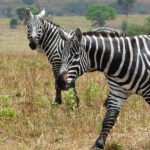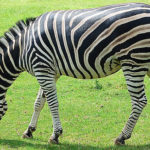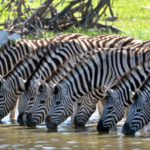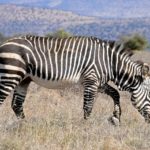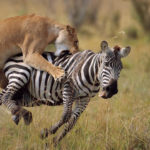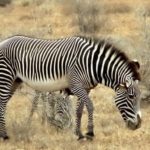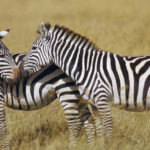Zebras – information
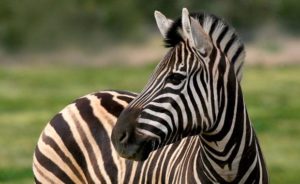 Zebras are a species of wild horses. All zebras have the same type of coloring – black and white stripes, but depend on the place of residence: the northern zebras are black and long, the southern – brown and short.
Zebras are a species of wild horses. All zebras have the same type of coloring – black and white stripes, but depend on the place of residence: the northern zebras are black and long, the southern – brown and short.
Biologists long could not understand why zebra strips are needed. Until recently, there was a suggestion that this is a disguise. In the flowing air of the African savanna, zebras merge with the landscape and become invisible to predators, primarily lions. Then all the same, all came to the conclusion that the stripes – this is a disguise not from predators, but from a tsetse fly. These small winged monsters carry a deadly disease of animals, accompanied by fever and loss of strength. Due to their stripes, zebras become less noticeable for these terrible flies and avoid their bites.
There are three varieties of zebras. Burchell’s zebra lives in South and East Africa, Grevy’s zebra lives in the Northeast region, while the mountain zebra, which differs from the others with a reddish nose, is found in the mountainous regions of South Africa. Some zebras live in reserves, as well as in zoos.
Zebras belong to the odd-toed ungulates, because they have a body weight of one third of the finger. The zebra’s fingers are protected by strong hoofs.
The height at the withers of an adult zebra can reach from 1.2 to 1.4 m. Weight from 175 to 450 kg, tail length is more than 50 cm. Each zebra has its own unique pattern on the skin, so any of them can be recognized even among hundreds of others. The zebra skin is very smooth, which makes the strips appear painted. The mane of the zebra is stiff and short, and quite unlike the horse, although these animals belong to the same family. Zebras are very curious, and this weakness often puts them at risk.
In the spring, after 12 months of pregnancy, a single foal is born to a female zebra. Already 1 hour after birth, he begins to walk. The first few weeks the colt eats only mother’s milk. The young the whole first year of life are not only under the supervision of the mother, but also under the protection of the dominant male. The baby is growing quickly, already in 2 years the mother leaves and begins to live in the herd.
The zebra is best developed by the sense of smell, which allows them to smell danger in advance. But because of a rather weak view, they can not notice predators in time.
Zebras live in herds. Under the leadership of one male there are 5-6 mares and their foals. The male fiercely protects his herd. Herd numbers 50-60 individuals, and sometimes hundreds. Zebras recognize their relatives and neighbors from other families by voice, smell and pattern of bands. Black and white stripes play the role of a kind of “bar code” – a kind of identity card. In addition, this camouflage coloring makes the animal invisible in the savannah, confusing predators.
